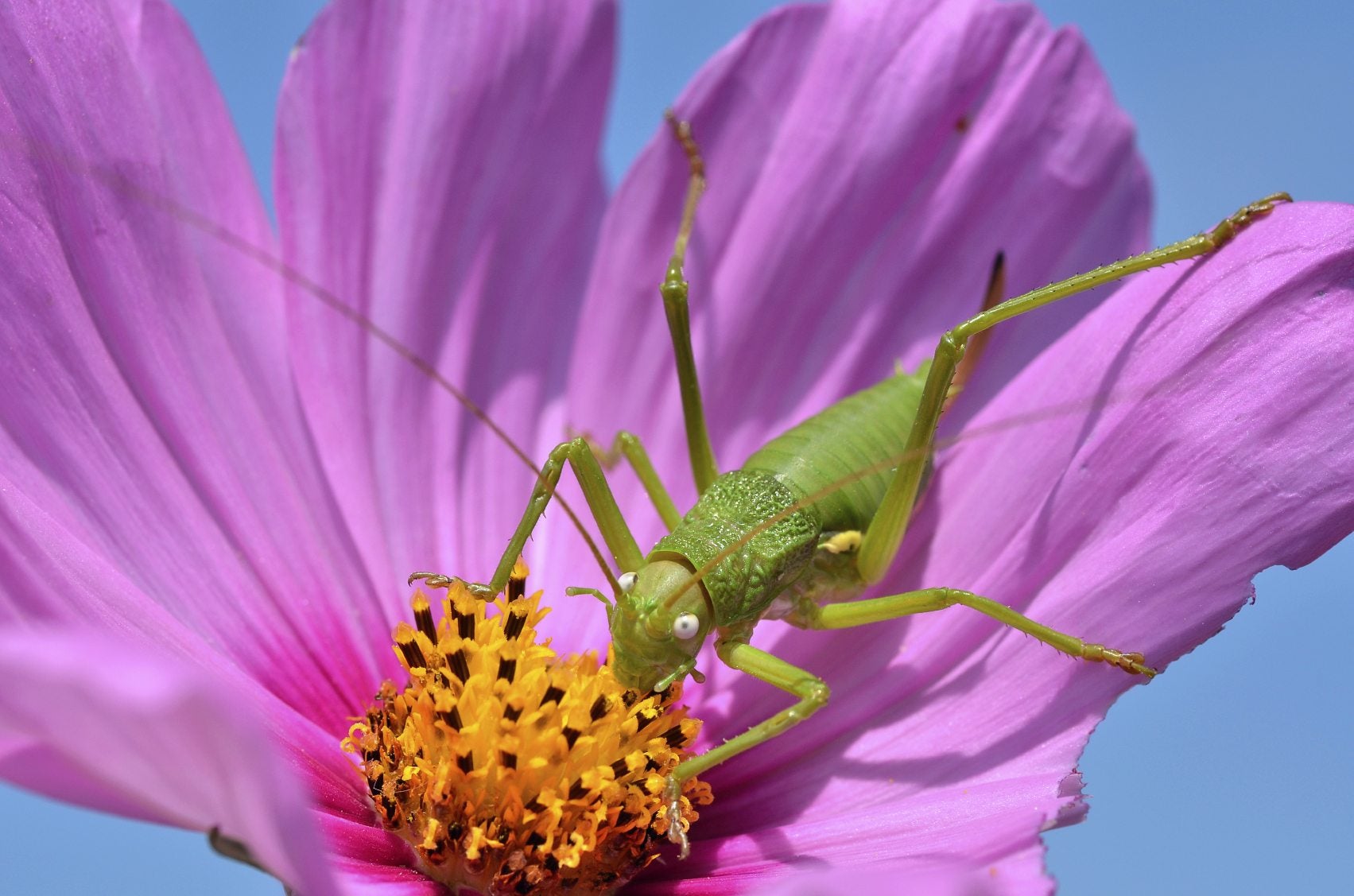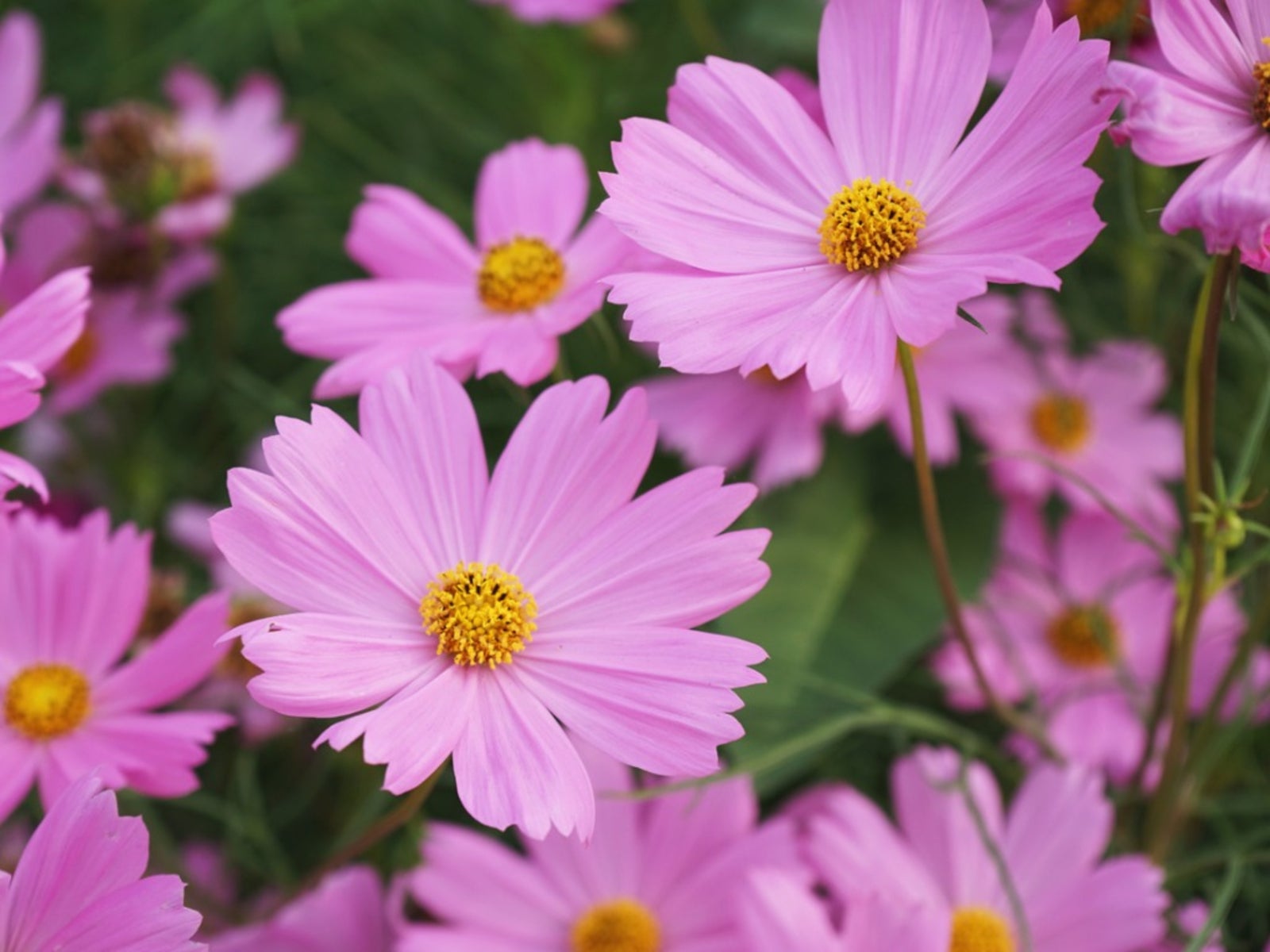Sulphur Cosmos Information – How To Grow A Mexican Aster Flower


With a little basic Sulphur cosmos information (Mexican aster) you can easily grow this lovely, sunny annual in your flower garden. It’s easy to grow even in poor soil. Mexican aster makes a great addition to beds and meadows. They are pretty and cheerful but also attract useful pollinators, like butterflies and bees.
What is a Mexican Aster?
The Mexican aster flower is also known as Sulphur cosmos. The story of this latter name is that Spanish priests grew the flower in their missionary gardens in South and Central America. Native to this region they appreciated the perfect placement of the petals on the flowers. They named them the Greek word cosmos, which refers to an ordered universe or universal harmony.
Sulphur cosmos belongs to the Asteraceae family of plants. It produces red, orange, and yellow daisy like flowers on top of stalks that grow up to six feet (almost 2 meters) tall but are more commonly only three or four feet (about 1 meter).
The cheerful, sunny flowers bloom in profusion from summer to fall. They look best in a meadow or naturalistic flower bed and provide a large splash or cluster of warmer colors in any bed. You’ll find a few different varieties of Mexican aster, including some dwarf types and those that produce double blooms.
Growing Sulphur Cosmos
Sulphur cosmos plants grow readily in full sun. They tolerate drought and poor soil, so they are pretty easy to grow in nearly any garden as long as you have sun. You can start from seed, either sowing indoors or in beds to a depth of one-sixteenth of an inch (0.2 cm.) or by scattering in a bed and raking into the soil. If starting outside, the soil should be 70-80 F. (21-27 C.).
You shouldn’t need to water this plant very often, as they tolerate dry soil well. As the flowers come and go, deadhead the plants regularly. This will encourage bushier growth and continued blooms. Since the stems can grow quite tall you may need to stake them.
This is an annual plant but does readily self-sow by seed. If you leave some flowers in place they will reseed. To better control the growth and spread of your Sulphur cosmos, though, you can collect seeds from the spent flowers and use them next year.
Gardening tips, videos, info and more delivered right to your inbox!
Sign up for the Gardening Know How newsletter today and receive a free copy of our e-book "How to Grow Delicious Tomatoes".

Mary Ellen Ellis has been gardening for over 20 years. With degrees in Chemistry and Biology, Mary Ellen's specialties are flowers, native plants, and herbs.
-
 Get Ready For A Summer Of Hummers! Grow These Full Sun Hummingbird Plants and Flowers
Get Ready For A Summer Of Hummers! Grow These Full Sun Hummingbird Plants and FlowersIf you’re lucky enough to enjoy a sunny backyard, make sure you are maxing out on your pollinator opportunities and grow these full sun hummingbird plants and flowers
By Tonya Barnett
-
 12 Lush Alternatives To A Lawn For Sustainable Spaces
12 Lush Alternatives To A Lawn For Sustainable SpacesAlternatives to a lawn are beautiful and also beneficial to your local ecosystem and its pollinators. Explore our top picks for plants to replace grass.
By Tonya Barnett
-
 Cutting Back Cosmos For More Blooms
Cutting Back Cosmos For More BloomsCutting cosmos will give you new flowers for the entire growing season as well as blooms for floral arrangements. Click to learn when and how.
By Mary Ellen Ellis
-
 Cosmos Plant Varieties: Learn About Types Of Cosmos Plants
Cosmos Plant Varieties: Learn About Types Of Cosmos PlantsWhen it comes to considering the many types of cosmos plants on the market, gardeners are faced with a wealth of riches. Learn about a few of the best cosmos plant varieties and cosmos flower types for the garden in this article.
By Mary H. Dyer
-
 Cosmos Flower Diseases – Reasons Cosmos Flowers Are Dying
Cosmos Flower Diseases – Reasons Cosmos Flowers Are DyingCosmos plant diseases range from fungal to bacterial and into insect vectored viruses. Controlling insects, providing proper irrigation and planting healthy plants can minimize these problems. Click here to learn more in this article.
By Bonnie L. Grant
-
 Companion Plants For Cosmos – Learn About Cosmos Companion Plants
Companion Plants For Cosmos – Learn About Cosmos Companion PlantsWhat grows well with cosmos, and why do cosmos need companions? Companion planting serves a number of valuable purposes in the garden. Click this article to find out what plants grow well with cosmos in the garden.
By Mary H. Dyer
-
 Common Insects On Cosmos: Treating Pests On Cosmos Plants
Common Insects On Cosmos: Treating Pests On Cosmos PlantsCosmos plant pests are rare and generally don't cause significant damage to the health of the plant. What pests do cosmos get? Learn about treating pests on cosmos plants in this article and keep your flowers looking beautiful.
By Bonnie L. Grant
-
 Caring For Chocolate Cosmos Plants: Growing Chocolate Cosmos Flowers
Caring For Chocolate Cosmos Plants: Growing Chocolate Cosmos FlowersChocolate isn't just for the kitchen, it's also for the garden, especially a chocolate one. Growing chocolate cosmos flowers will delight any chocolate lover. This article had information on its care in the garden. Click here to learn more.
By Gardening Know How
-
 Cosmos Not Flowering: Why Are My Cosmos Not Blooming
Cosmos Not Flowering: Why Are My Cosmos Not BloomingCosmos is a showy annual plant commonly grown in gardens. But what happens when there are no blooms on cosmos? Read this article to learn more about why cosmos will not flower.
By Susan Patterson
-
 Should You Deadhead Cosmos: Tips For Removing Cosmos Spent Flowers
Should You Deadhead Cosmos: Tips For Removing Cosmos Spent FlowersDeadheading cosmos after the blooms start to fade will rejuvenate the plant and cause it to bloom over and over again, up until the autumn frost. Find out how to deadhead cosmos in this article.
By Anne Baley